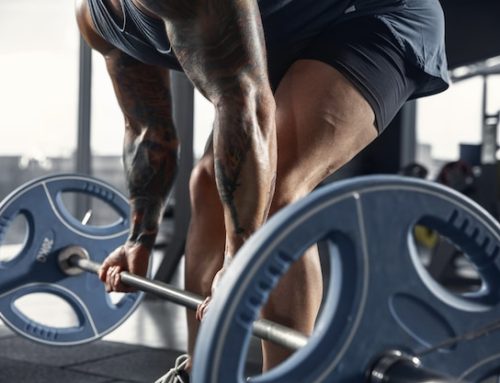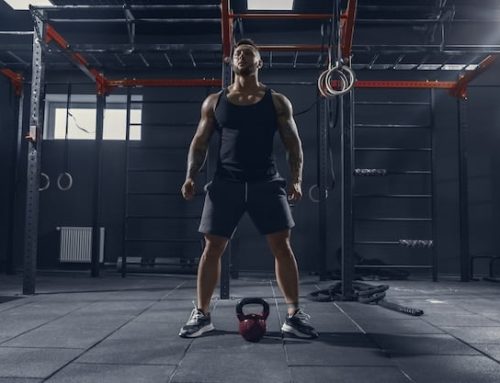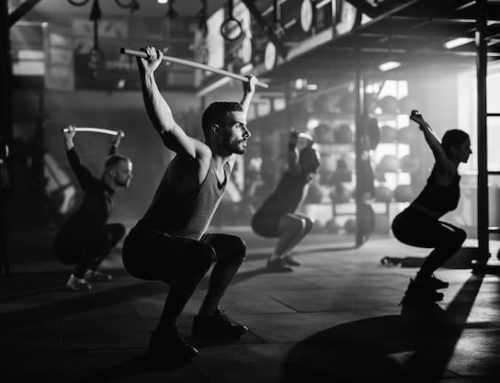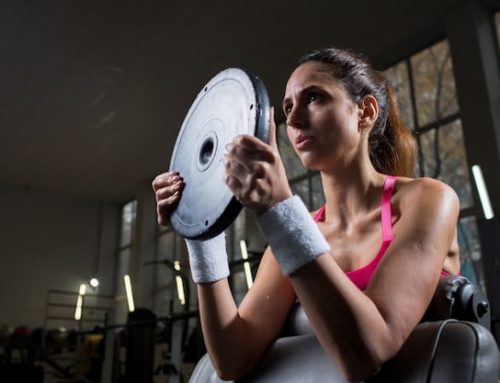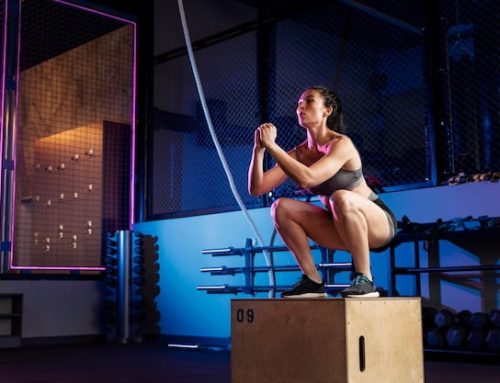The Debate Continues: Why Real Athletes Don’t Do CrossFit?
CrossFit has gained immense popularity in recent years, with thousands of people joining the movement to get fit and build a community. However, many elite athletes still choose to stay away from this training program. The question is, why?
The CrossFit Training Model
CrossFit is a training program that combines various exercises and workouts from different disciplines, including weightlifting, gymnastics, and cardio. It aims to improve your overall fitness by focusing on 10 general physical skills – cardiovascular and respiratory endurance, stamina, strength, flexibility, power, speed, coordination, agility, balance, and accuracy.
The CrossFit training model consists of the Workout of the Day (WOD), which involves a series of exercises performed in a specific time frame or as many reps as possible. The WODs are designed to be constantly varied, challenging, and intense. The goal is to push your limits and constantly improve your performance.
The Criticism of CrossFit
Despite its popularity, CrossFit has received a fair amount of criticism from the fitness industry and elite athletes. Some of the criticisms are:
The Risk of Injury
The high-intensity nature of CrossFit workouts can increase the risk of injury, especially if you’re not properly trained or have underlying health issues. Some of the exercises, such as Olympic weightlifting, require proper technique to avoid injury.
Lack of Specificity
CrossFit focuses on improving overall fitness, but it may not be ideal for athletes who require specific training for their sport. For example, a marathon runner may need to focus on endurance running and not on strength training, which is a key component of CrossFit.
Questionable Programming
The constantly varied nature of CrossFit workouts can lead to inconsistent programming, making it difficult to track progress and achieve specific goals. Some athletes also argue that the workouts are designed more for entertainment than for actual fitness gains.

Transform Your Body and Mind with CrossFit’s Five-Time Fittest Man on Earth
Crossfit often causes injuries
Injuries in crossfit trainers are very common – the rate is much higher than in other sports.
Why? Firstly, crossfit is based on exercises with weights (dumbbells, barbells) which, to be safe, must be performed very accurately and technically correctly. A person who has never trained with weights before, and who is exercising alone, may find it difficult to master the correct technique.
In addition, he or she usually does not have the correct movement habits, which, combined with the intense crossfit training, can cause muscular imbalances.
In addition, crossfit often employs a regimen like AMRAP – As Many Rounds As Possible, or as many rounds as possible in as little time as possible. The desire to perform as many repetitions as possible makes the exercisers’ movements fast but inaccurate. This is particularly dangerous when exercising with barbells, when even the smallest mistake (such as hunching over or doing a cat back) can result in a serious spinal injury.
Crossfit is extremely tiring
The unofficial rule of crossfit is: work out so that you collapse from fatigue at the end of your workout. Coaches don’t usually recommend this method of training, but the fact is that crossfit requires you to maintain a constant, rhythmic pace at all times.
There is no rest between exercises (only between rounds), so in practice you have to perform several extremely tiring strength and endurance exercises one after the other for several minutes. For example: 10 burpees, 15 push-ups, 10 pull-ups on a bar, 15 jumps onto a high box.
Not everyone’s body is able to cope with such loads, so you need to be very careful when choosing a training plan and take your limitations into account. People with heart problems, post-heart attack or high blood pressure should avoid this type of exercise altogether and opt for moderate cardio instead. Periodic illnesses such as the flu, a cold or even simple fatigue will also disqualify you from participating in crossfit training.
Crossfit can cause strain pains
Every crossfit workout is a considerable strain on the muscles and the entire musculoskeletal system. Experts emphasise that training too intensively and too often can have a particularly negative effect on the condition of the joints. The cartilage that fills them wears away much more quickly during crossfit exercises than during gym training.
For this reason, crossfit is not a good choice for people with rheumatic diseases or osteoporosis. It should also not be practised by people who have had injuries, accidents or operations. It is important that even healthy people carefully observe the signals sent by the body during training – any prolonged pain is an indication to abandon training immediately.
A rarer but significant risk associated with crossfit is rhabdomyolysis – a type of injury that occurs in very hard-training athletes. It involves damage to muscle tissue (its breakdown) as a result of excessive training loads. Symptoms of rhabdomyolysis include general weakness, muscle stiffness and pain, and dark-coloured urine. The risk of this disease increases when we resume training after a long break and do not adapt the difficulty of the exercises to our condition.
Why Real Athletes Don’t Do CrossFit?
The statement “real athletes don’t do CrossFit” is a controversial one, and opinions on this topic vary widely. Some athletes do not do CrossFit because they may have different training goals or preferences, while others may choose to incorporate CrossFit-style workouts into their training regimen. Here are a few potential reasons why some athletes may choose not to do CrossFit:
- Specialization: Some athletes may choose to focus on one sport or activity to achieve a high level of skill or mastery in that particular area. CrossFit, on the other hand, is designed to be a more generalist approach to fitness, incorporating a variety of exercises and movements.
- Injury risk: CrossFit workouts can be intense and high-impact, which can increase the risk of injury if proper form and technique are not maintained. Some athletes may choose to avoid CrossFit or limit their participation in order to reduce the risk of injury.
- Training goals: Different athletes may have different training goals, such as improving strength, speed, endurance, or agility. CrossFit workouts may not be the most effective or efficient way to achieve certain specific training goals.
- Coaching and programming: Some athletes may prefer to work with coaches or trainers who specialize in their particular sport or activity, rather than following the general programming of a CrossFit gym.
It’s worth noting, however, that many professional athletes and teams have incorporated CrossFit-style workouts into their training regimen with positive results. Ultimately, the decision of whether or not to do CrossFit is a personal one that depends on individual goals, preferences, and risk tolerance.
Despite the criticisms, CrossFit has produced many impressive athletes, including Rich Froning, Mat Fraser, and Katrin Davidsdottir. However, many elite athletes from different sports still choose to stay away from CrossFit. Here are some reasons why:
Sport-Specific Training
Elite athletes require specific training to excel in their sport. CrossFit may not be the best choice for athletes who need to focus on specific skills to improve performance. For example, a basketball player needs to focus on shooting, dribbling, and defense, while a CrossFit workout may not provide the same benefits.
Competing Priorities
Elite athletes have a limited amount of time and energy to focus on training. They need to prioritize their workouts to ensure they’re improving their performance in their respective sport. CrossFit may not be a priority for them, as it may not provide the same benefits as their sport-specific training.
Risk of Injury
Elite athletes cannot afford to get injured, as it could significantly impact their performance and earning potential. CrossFit’s high-intensity workouts can increase the risk of injury, making it a risky choice for athletes.
Conclusion
CrossFit has its pros and cons, and its suitability depends on your fitness goals and training needs. While it has produced many impressive athletes, elite athletes still choose to stay away from it due to the risk of injury, competing priorities, and the need for sport-specific training. However, for those looking for a challenging and community-driven workout program, CrossFit may be an excellent choice. Regardless of your fitness goals, always prioritize safety and proper technique to avoid injury and maximize gains.
| Criticism | Why Real Athletes Don’t Do CrossFit? |
|---|---|
| The Risk of Injury | Risk of Injury |
| Lack of Specificity | Sport-Specific Training |
| Questionable Programming | Competing Priorities |

